History: Vanderbilt’s biggest white oak
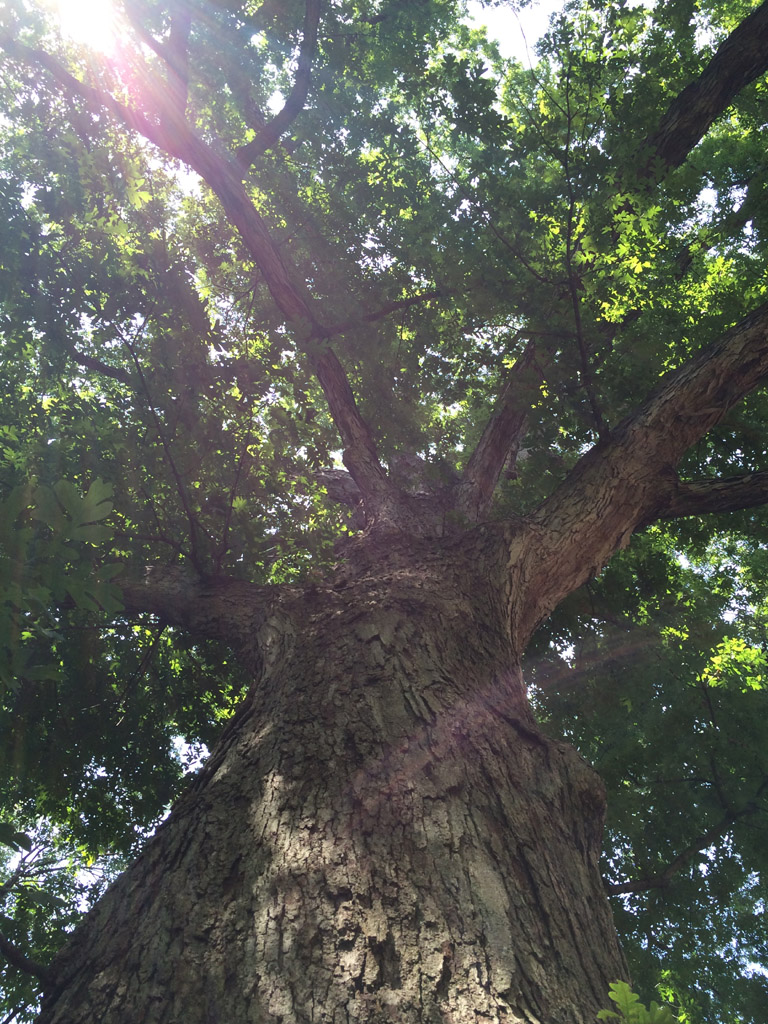
Looking up the trunk of Vanderbilt’s largest white oak. Photo by Zach Taylor under a CC BY license
This beautiful giant is one of the largest trees in the arboretum and looking up its trunk, you can appreciate its incredible 35 meter (115 ft.) crown spread. For over a hundred years, this tree has witnessed the movement of many students under its branches. The main path from “Old Main” (as Kirkland was called at that time) to 21st Ave. S. went past this tree.
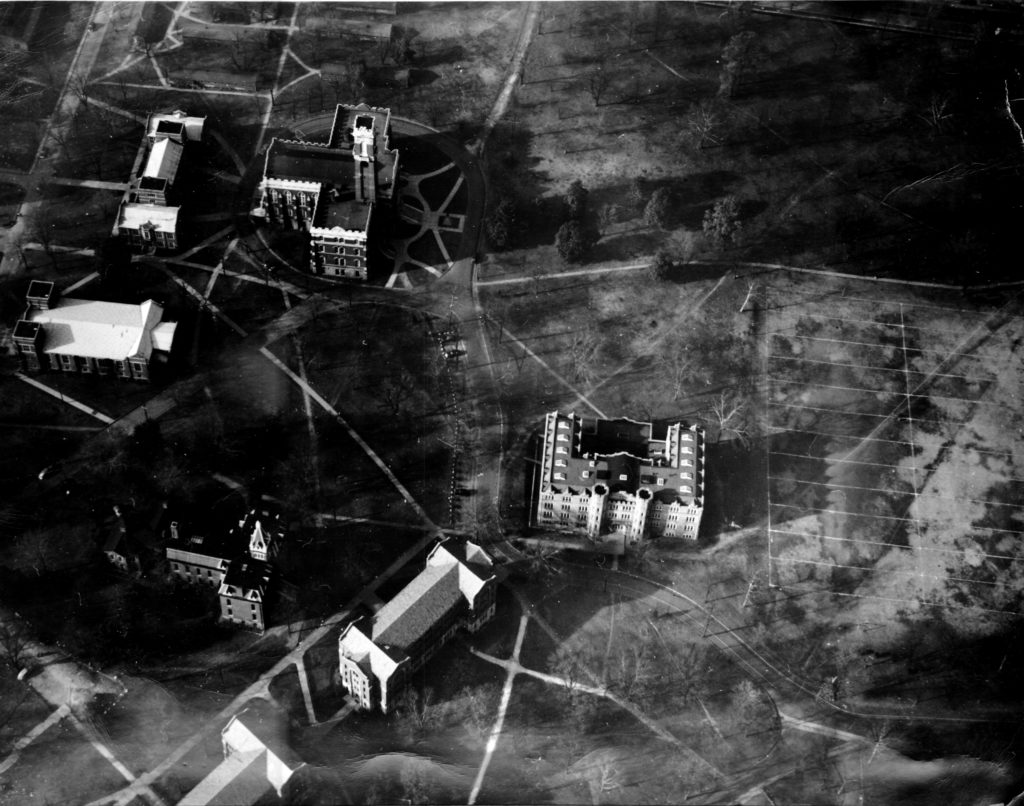
Photo of the vicinity of Kirkland and Furman Halls between 1945 and 1952. Curry Field is also visible. Photo from Campus Planning and Construction – Facilities Information Services
In this photo taken soon after World War II, we can see that path, starting from the circular drive that once went around Kirkland, then bending to the right at the tree. To the east and south (visible in this photo) was the original Dudley Field (later renamed Curry Field), where baseball and football games were played before the new fields were constructed on the west side of campus. Spectators probably sat in the shade of this tree as they watched the games.
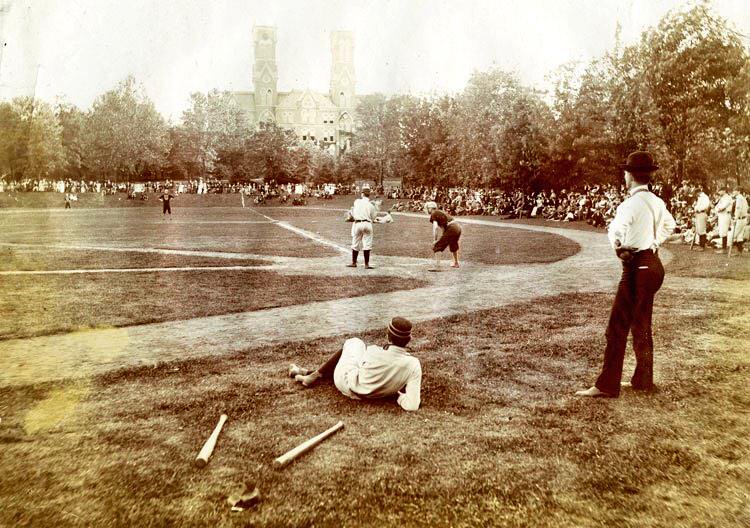
Baseball game between Vanderbilt and Cumberland University in 1892. Photo from Vanderbilt University Special Collections and University Archives
Although we can’t tell for sure where the white oak was in this 1892 photo, it was probably one of the trees behind the spectators in the upper right of the photo. Although it is now just a lawn, the name “Curry Field” is still applied to the area between Wilson and Furman Halls.

Enlargement showing the location of the large white oak 2-161.
Because we have a high-resolution scan of the 1940’s photo, we can zoom in on the area where the white oak is.
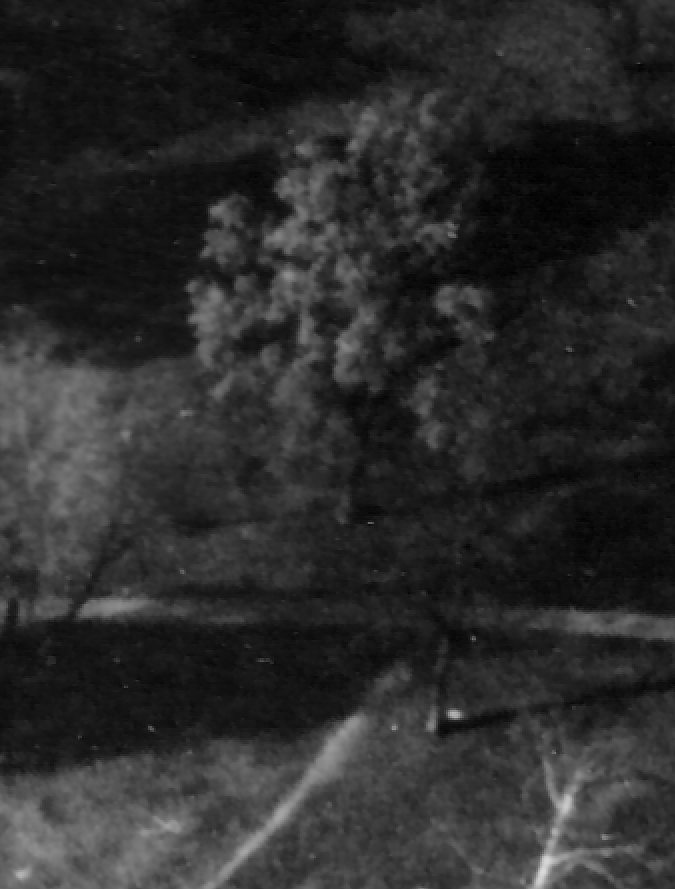
Enlargement showing the location of the large white oak 2-161.
We know that this is white oak 2-161 partly because when we georectify the photo and overlay the current location of the tree, it’s in the right spot. But we can also confirm that it’s a white oak because of its appearance on the photo. Since this picture was taken in winter, there is generally a clear distinction between the deciduous trees that have lost all of their leaves and the magnolias, which keep their large, glossy green leaves all winter. However, white oaks are one of the species that tends to keep their dead leaves on their twigs for much of the winter. That’s why the white oak has a much “leafier” appearance than the other trees in the photo.
By comparison with the clock tower of Kirkland (170 feet tall), we can estimate that in about 1945 the oak was about 70 ft. tall with a crown spread of about 52 feet. In the 75 years since then, the height has increased by about 30%, but the crown spread has doubled! From this photo, we can see that it didn’t have much competition for light for many years and was able to spread its branches to take advantage of that.
This photo is the earliest one in which we can definitively spot the tree, and given that it was a large tree in 1945, it was probably one of the many trees that were planted soon after the University was founded.
During the first decades after the university was founded, there was a small ornamental pool near the location of the oak.
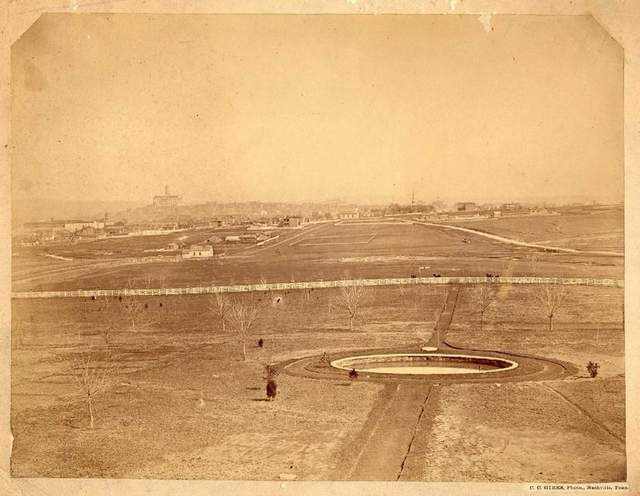
C. C. Giers photo 1875 photo from Kirkland Hall looking towards downtown Nashville. Credited NASHVILLE ROOM, NASHVILLE PUBLIC LIBRARY
A very interesting photo of that pool and the sidewalk leading from Kirkland (then “Old Main”) to 21st Avenue S. shows the many small trees that were planted on the campus. It is possible that one of those trees to the left of the pool is white oak 2-161! For more information about this tree and others near Kirkland Hall, see this blog post.
Return to the historical tree tour page for white oak 2-161.